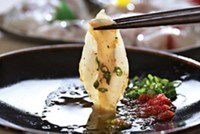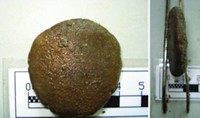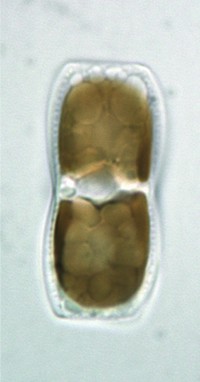Advertisement
Grab your lab coat. Let's get started
Welcome!
Welcome!
Create an account below to get 6 C&EN articles per month, receive newsletters and more - all free.
It seems this is your first time logging in online. Please enter the following information to continue.
As an ACS member you automatically get access to this site. All we need is few more details to create your reading experience.
Not you? Sign in with a different account.
Not you? Sign in with a different account.
ERROR 1
ERROR 1
ERROR 2
ERROR 2
ERROR 2
ERROR 2
ERROR 2
Password and Confirm password must match.
If you have an ACS member number, please enter it here so we can link this account to your membership. (optional)
ERROR 2
ACS values your privacy. By submitting your information, you are gaining access to C&EN and subscribing to our weekly newsletter. We use the information you provide to make your reading experience better, and we will never sell your data to third party members.
Synthesis
Newscripts
Fearomones, Lemon appeal, Asparagus revelation 200 years ago
by Michael Freemantle
June 26, 2006
| A version of this story appeared in
Volume 84, Issue 26
Fearomones
It's a question we all ask when swimming in shark-infested waters: What do we do if a shark attacks us? Doug Lansky offers some invaluable advice for the intrepid swimmer in his book "The Rough Guide to Travel Survival: The Essential Field Manual" (London: Rough Guides Ltd., 2005).
First, make sure that you bandage wounds and cover jewelry before you go swimming. Sharks find blood, shiny objects, urine, and feces most enticing. Next, keep a watchful eye on the shark. If it is swimming around you in large circles, it is just plain curious. On the other hand, tight circles mean an attack may be imminent. In this case, bluff aggression. Swim toward it confidently, slapping your hands and shouting. If that doesn't work, kick the shark's snout with your feet (assuming you still have feet). Finally, if all else fails, poke your fingers in its eyes and gills.
Lanksy also has some tips for people traveling in the Arctic, mountains, deserts, jungles, and game reserves. For example: Don't worry about cheetahs. They are nervous about almost everything and will move away from you. Lions, however, can be dangerous, especially if they are injured males or females with cubs. They attack from behind, so the secret is to face them—eyeball to eyeball. If one does attack you, fight back by punching and grabbing for its snout and eyes. And yes, shout and scream.
When lightning strikes, Lansky suggests that you seek shelter in a cave, making sure that you do not sit or stand against the rock on either side. Even better, shelter in a house or building with wires and pipes that channel the lightning into the ground.
Lemon appeal
Tiger worms inhabit compost heaps and help to recycle stale bread, fruit and vegetable waste, used teabags, and many other types of organic waste. But unlike the bacteria and other microorganisms in the ecofriendly heap community, the worms do not like the peel of fresh lemons, oranges, and grapefruit. The worms "are put off by the antiseptic properties of a substance called d-limonene," notes gardening expert Lia Leendertz in an answer to a reader's query in the weekend supplement (May 20, page 104) of the British newspaper the Guardian.
Leendertz suggests that the citrus fruit peel be cut into small pieces and mixed with lots of other material to be composted. The worms can then avoid the peel until it turns moldy. If you have a lot of citrus peel, however, she advises that you keep it in a separate bin and leave it there until it turns furry and green. Rotten fruit, she observes, does not contain limonene, so you can add it to the compost heap.
Asparagus revelation 200 years ago
Asparagus, white or green, boiled or steamed, is a tasty and nutritionally valuable vegetable. It has few calories, no fat, and is a good source of folic acid, a vitamin of the B complex that is needed for nucleic acid synthesis. Lack of the vitamin causes anemia.
The vegetable has also proven its value in another way−in the history of science. Two hundred years ago, French pharmacists Louis Nicolas Vauquelin (1763-1829) and Pierre-Jean Robiquet (1780-1840) reported the crystallization of the nonessential amino acid asparagine from asparagus juice (Ann. Chim. 1806, 57, 88). It was the first amino acid to be discovered in plants.
Vauquelin, who was born in Normandy, was made a member of the Academy of Sciences in France in 1791 and helped to edit the journal Annales de Chimie (Annals of Chemistry). He is also famous for other discoveries. For example, he discovered the elements beryllium in beryl, a beryllium aluminum silicate mineral, and chromium in the red lead ore crocoite (PbCrO4).






Join the conversation
Contact the reporter
Submit a Letter to the Editor for publication
Engage with us on Twitter